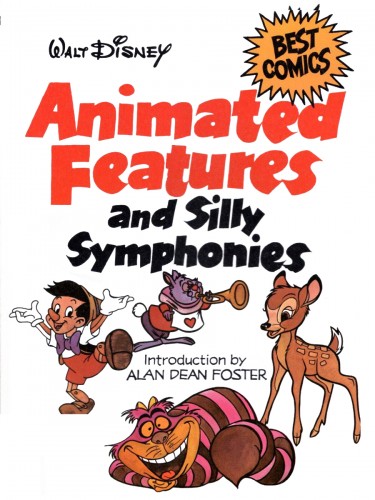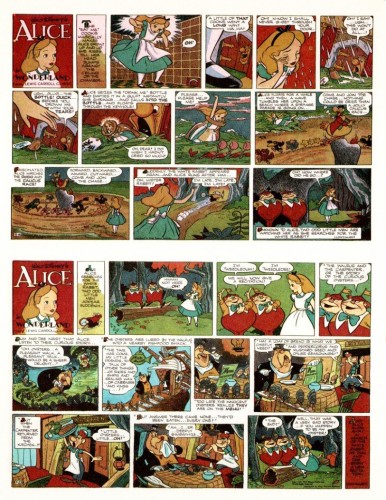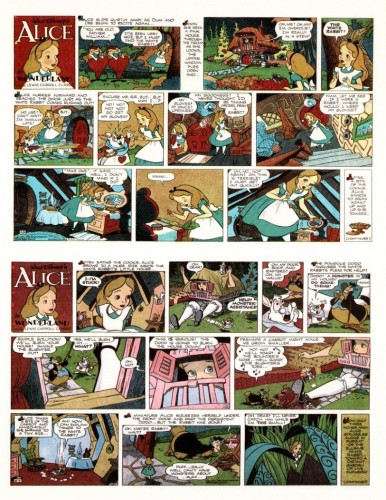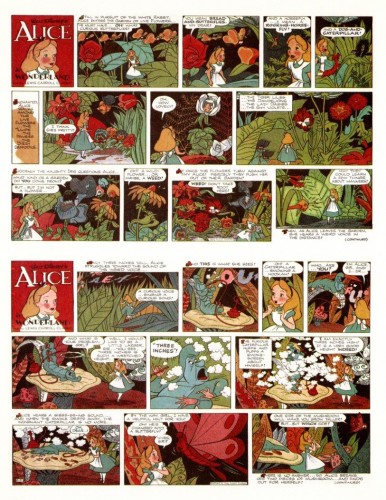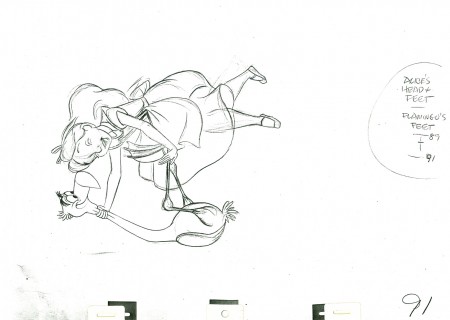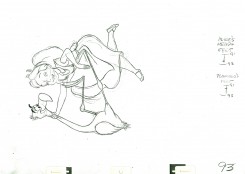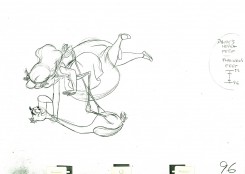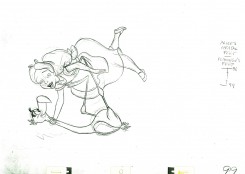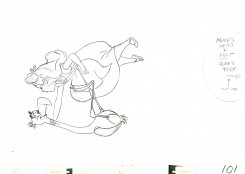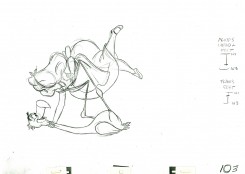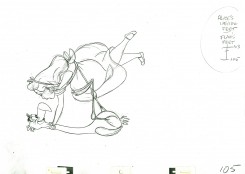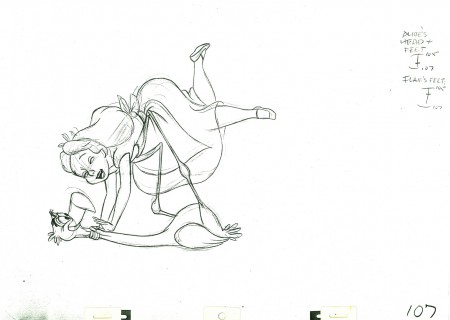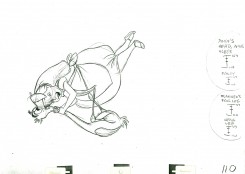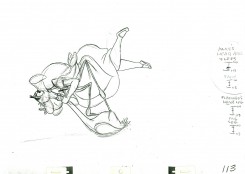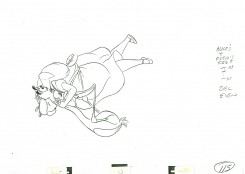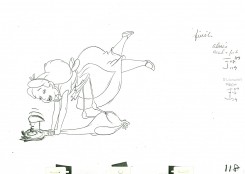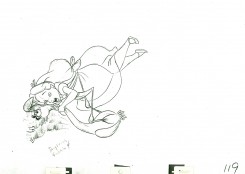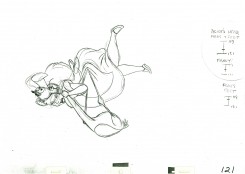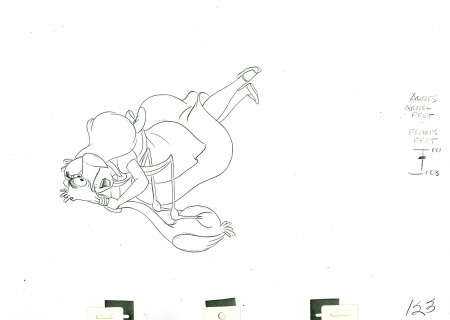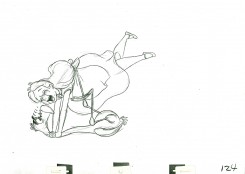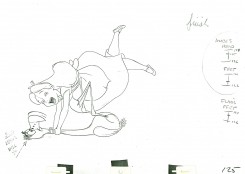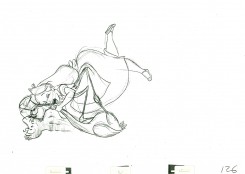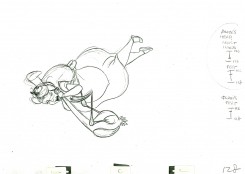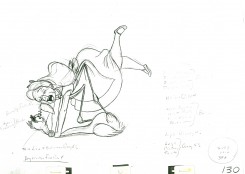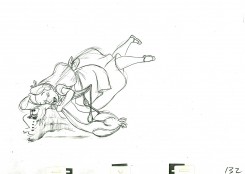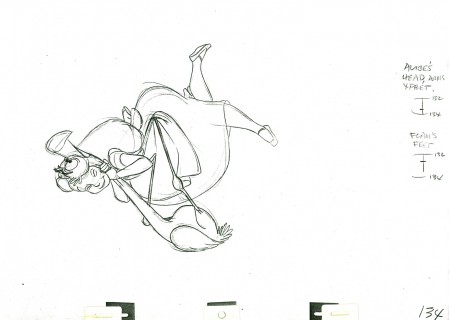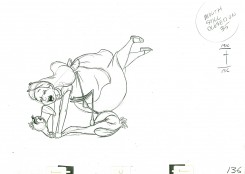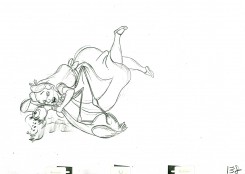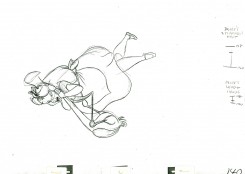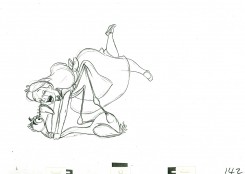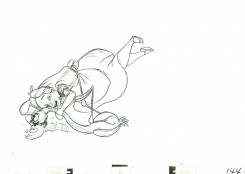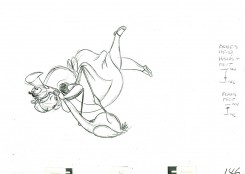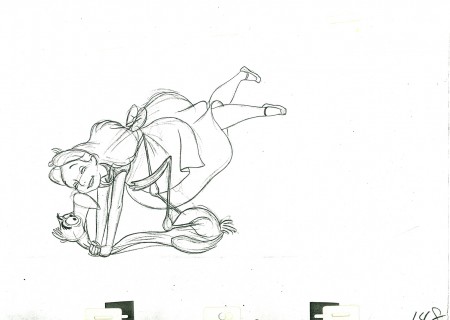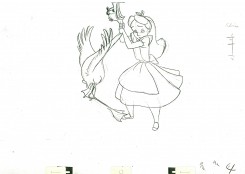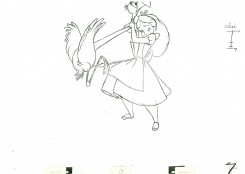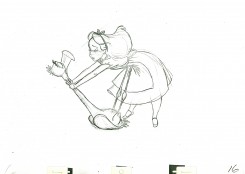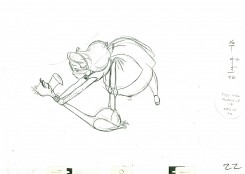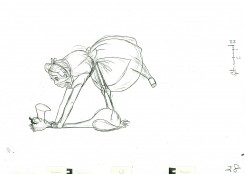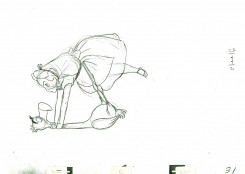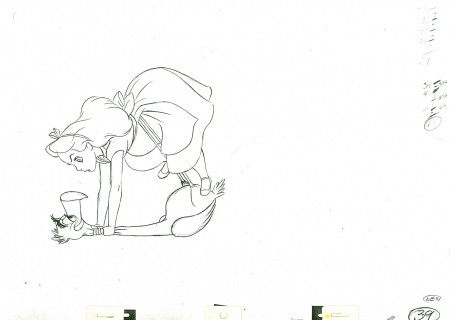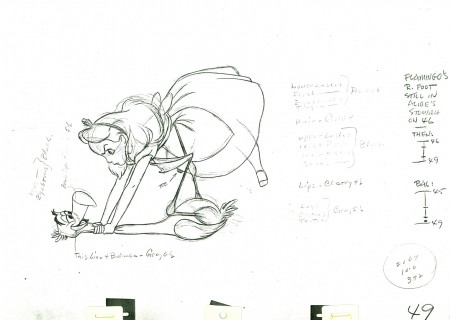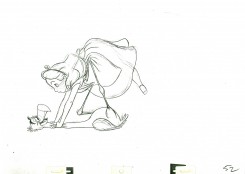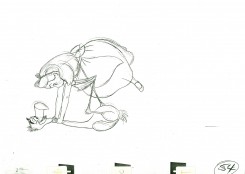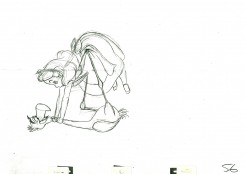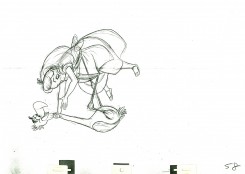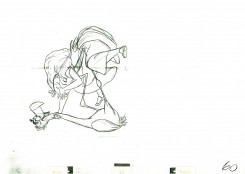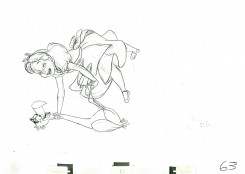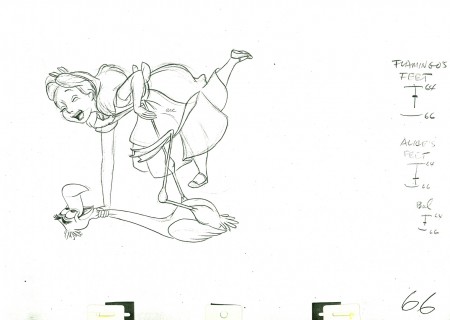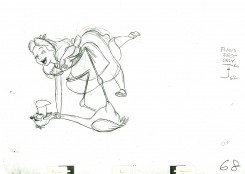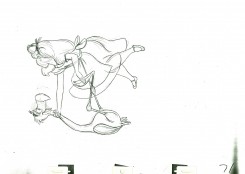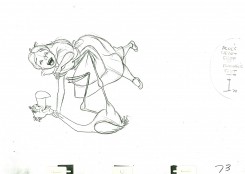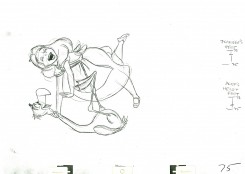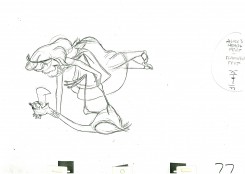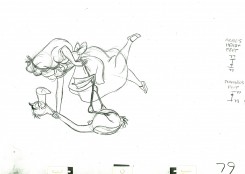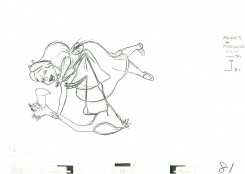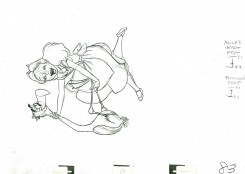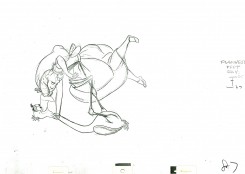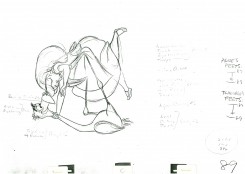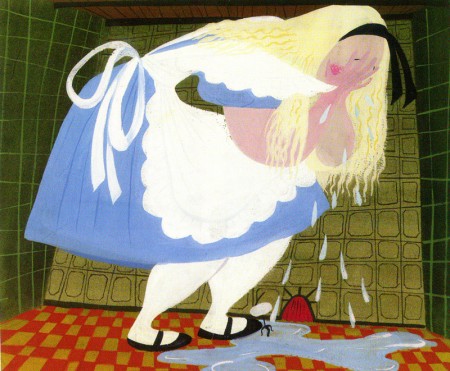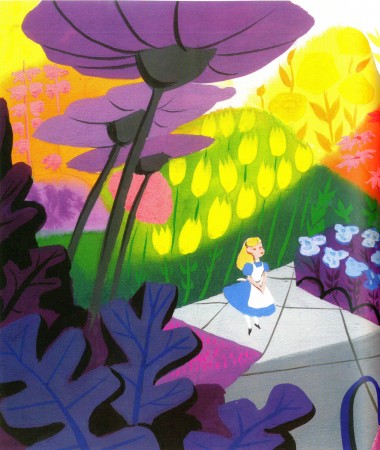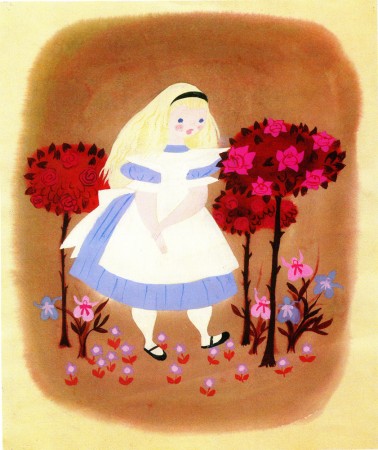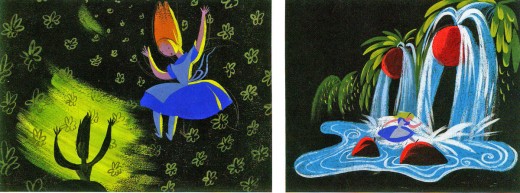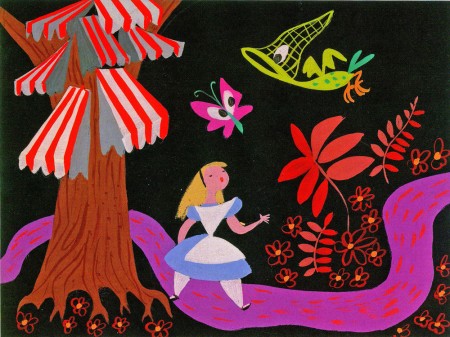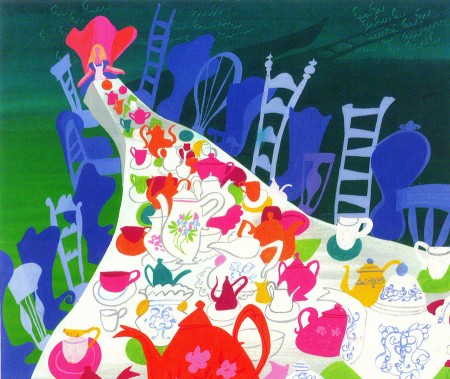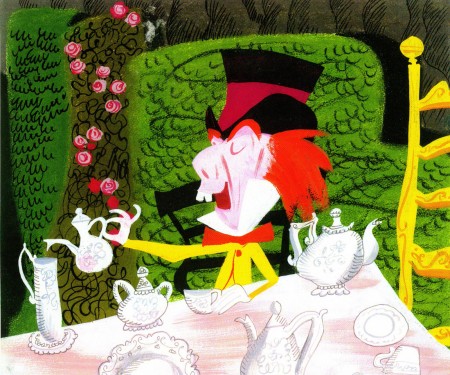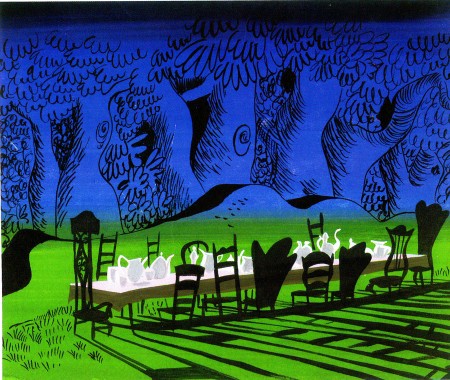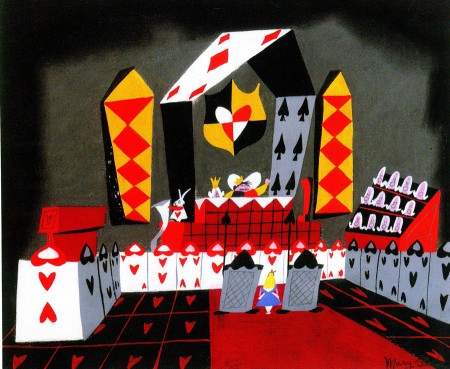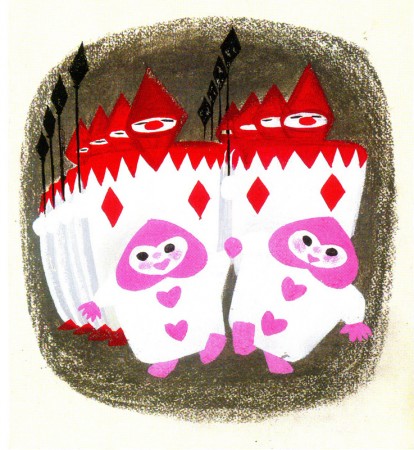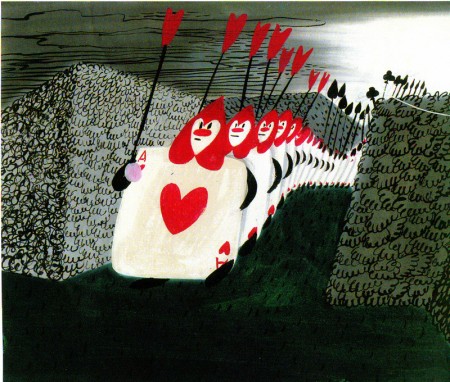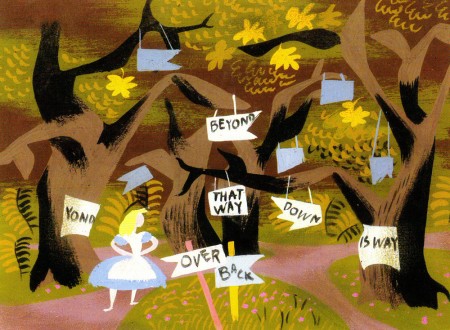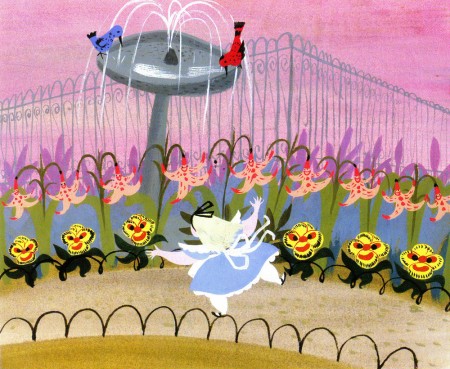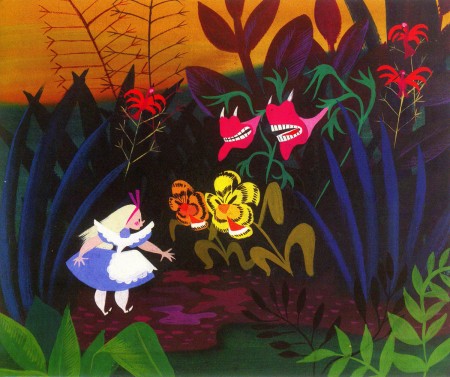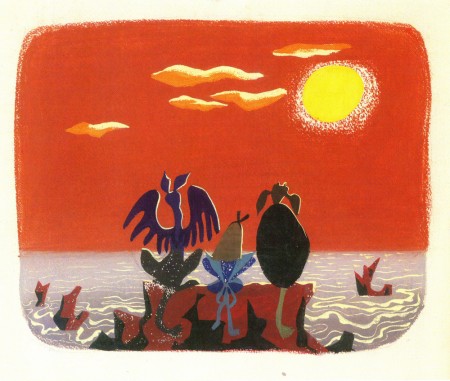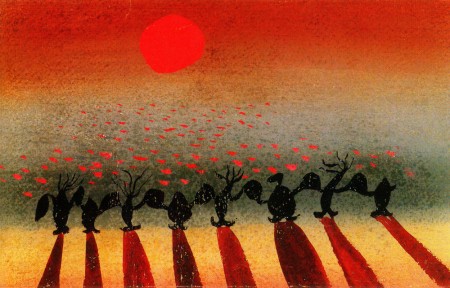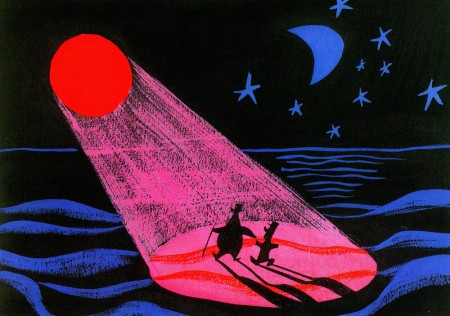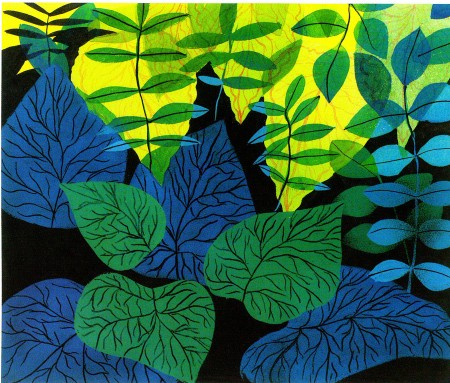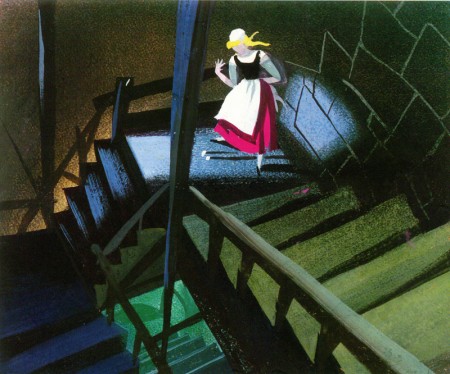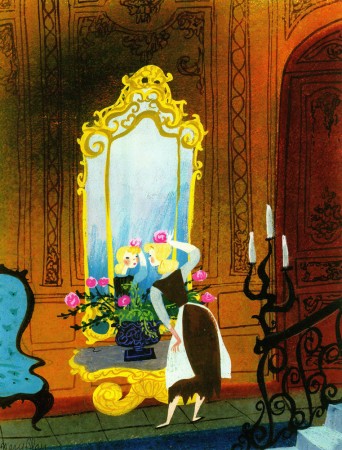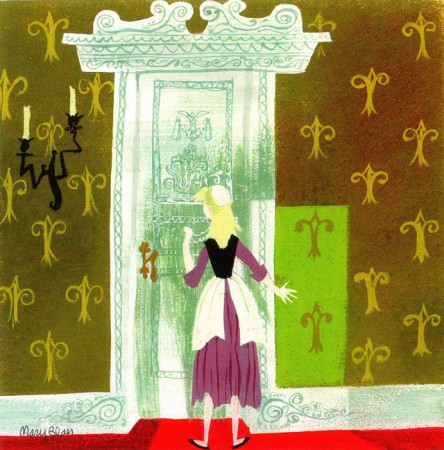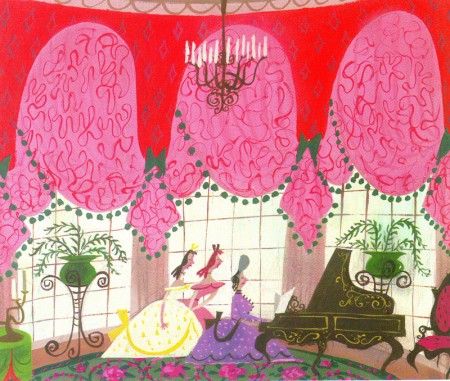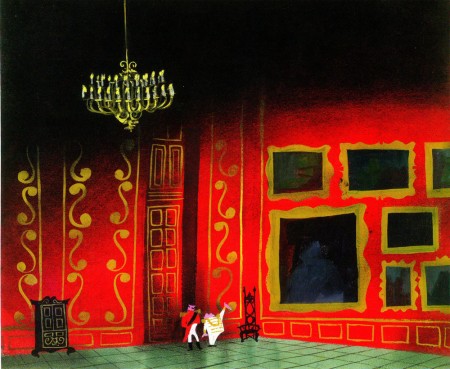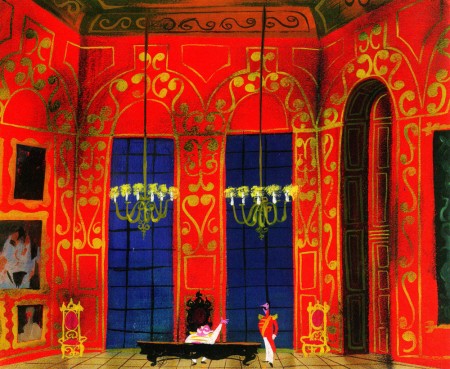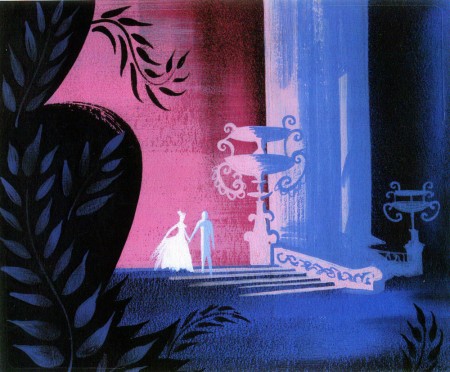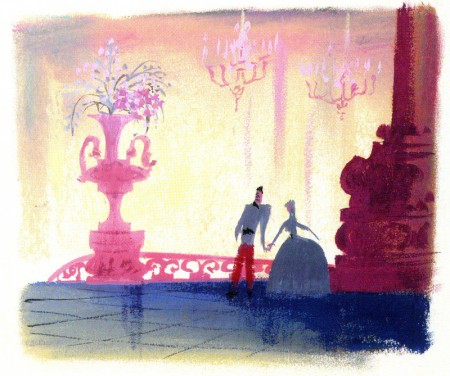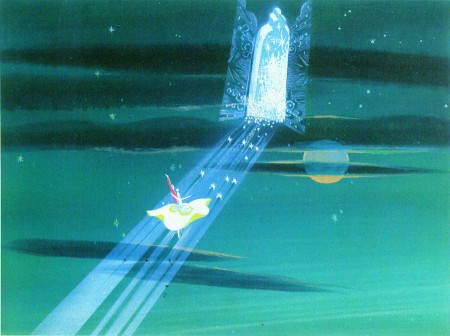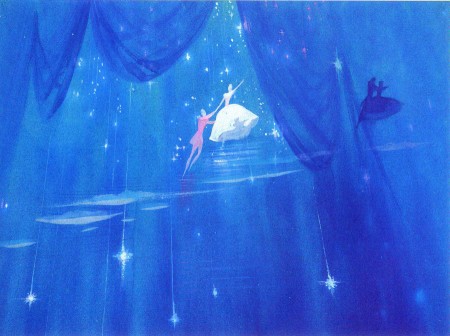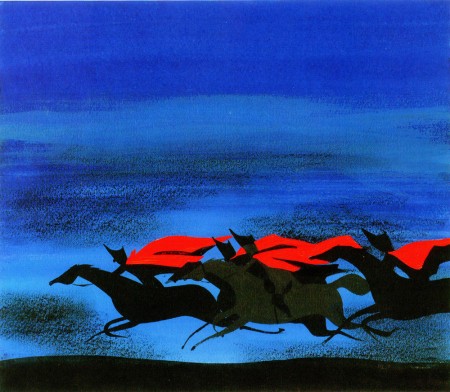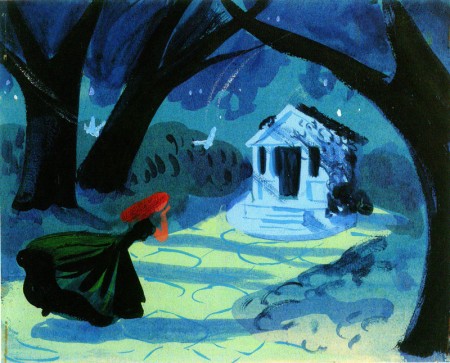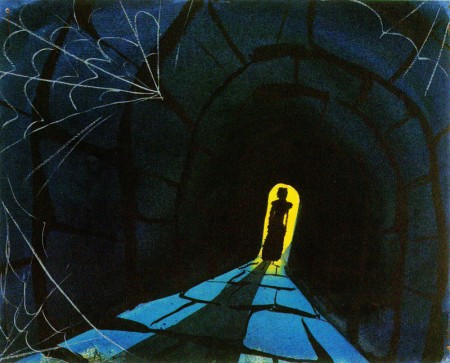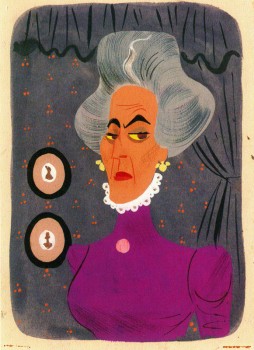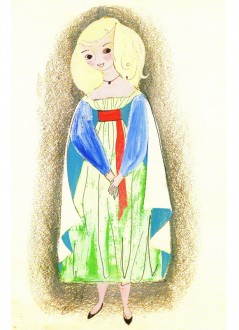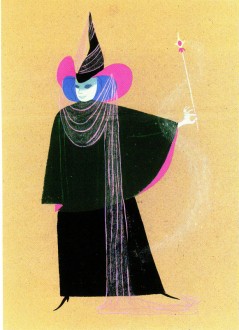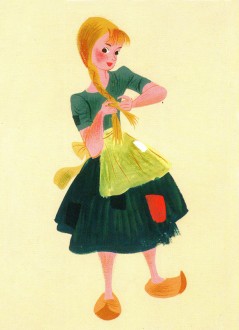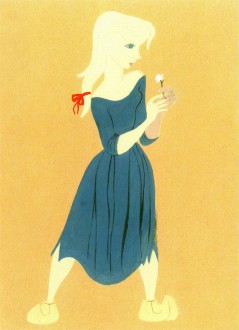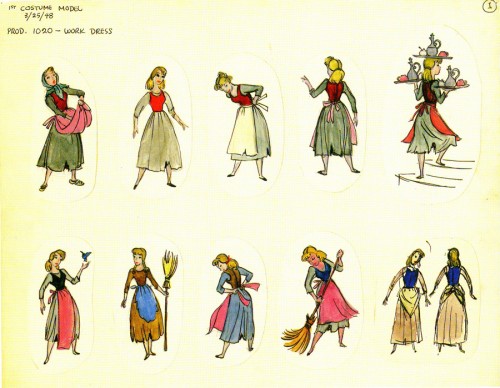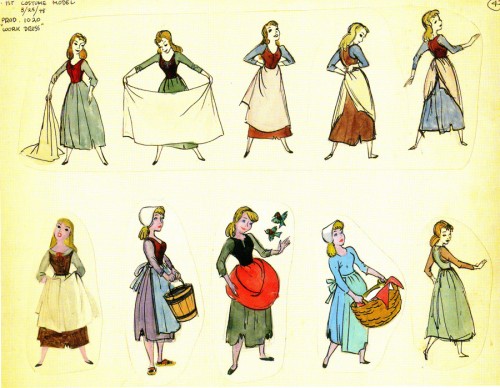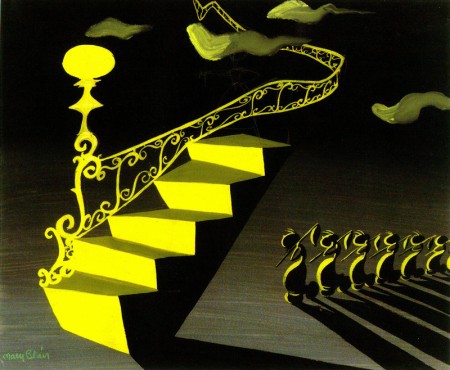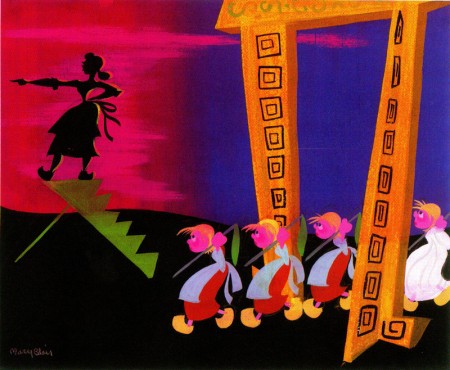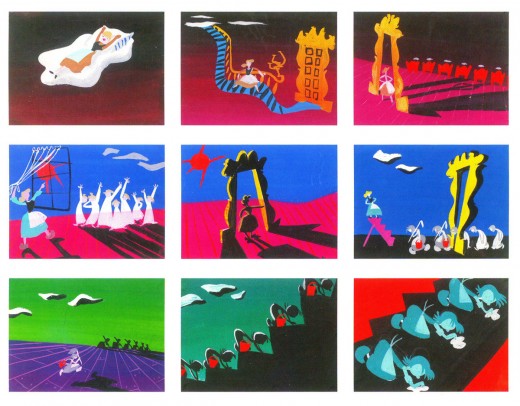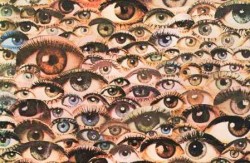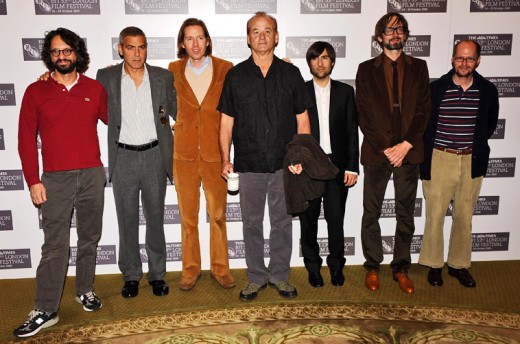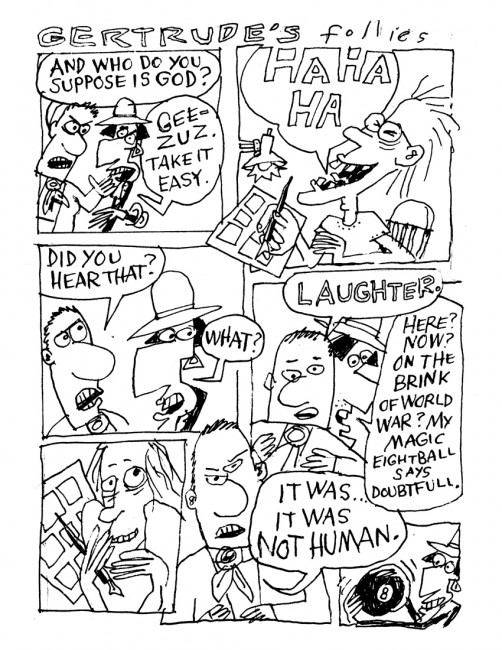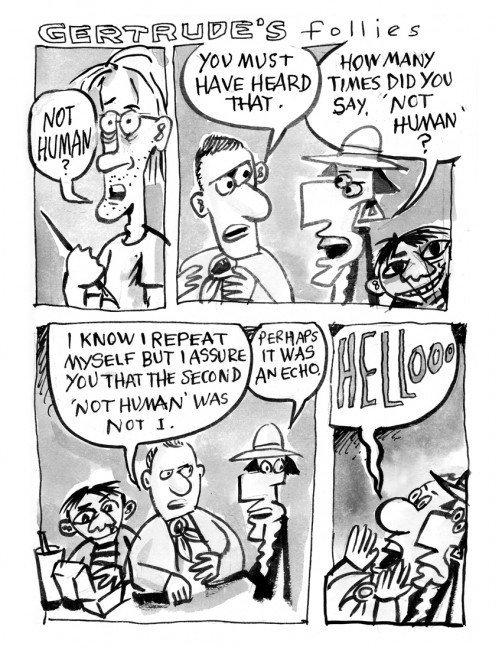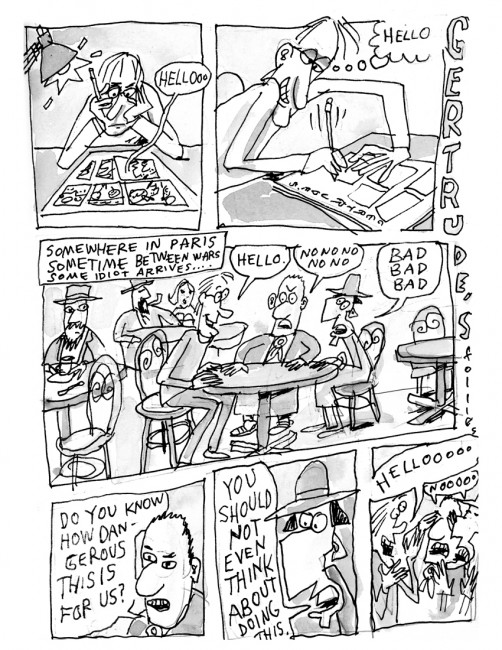Search ResultsFor "alice in wonderland"
Bill Peckmann &Comic Art &Disney 13 Nov 2010 08:55 am
Alice Comix – pt 1
.
- Following the posts of the Cinderella Sunday strips, and taking a cue from the Milt Kahl Alice scenes I’ve posted, I am offering these Sunday strips of Alice In Wonderland. They were sent by Bill Peckmann from the excellent book he owns: Animated Features and Silly Symphonies.
They’re dated 1951, and each page contains 2 Sunday strips. Cinderella features artwork by Manuel Gonzales, penciler, and Dick Moores, inker. More of the gorgeous line work by Dick Moores.
Two Sunday strips per page:
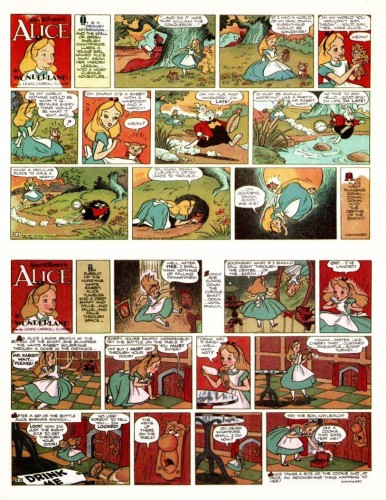 157
157(Click any page to enlarge.)
Once again thanks to Bill Peckmann for scanning these pages.
Animation &Animation Artifacts &Disney 10 Nov 2010 08:43 am
Milt Kahl’s Alice – 2
- This is a continuation of Scene 392 from Alice in Wonderland as animated by the brilliant Milt Kahl. The animation seems to play a bit fast in the PT, but works well in color (albeit still fast.) Yet the exposure is the same. Definitely, the missing inbetweens make the difference.
As always, we start with the last drawing from last week.
_________________________
Here’s a QT movie of the action layed out above. Since there are no inbetweens contained within the scene, each drawing is exposed in the QT for the dial number on the sheet.
Animation &Animation Artifacts &Disney 03 Nov 2010 07:22 am
Milt Kahl’s Alice – 1
- Here’s a scene from Alice in Wonderland that was animated bit Milt Kahl. I’ll post the first half of the scene here, and will follow with the rest next week. I also have a scene that follows, and I’ll post that, as well.
Thanks to Lou Scarborough Jr. for the loan of the art work.
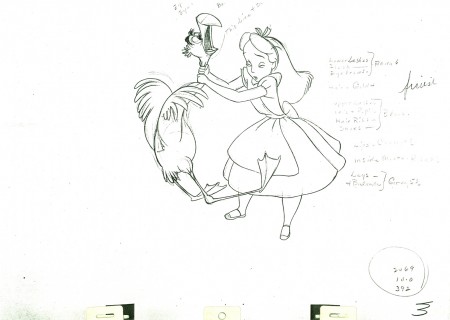 3
3(Click any image to enlarge.)
The remaining drawings will be added next week.
_________________________
Here’s a QT movie of the action layed out above.
Frame Grabs &Independent Animation 30 Sep 2010 06:16 am
Harman-Ising’s Alice
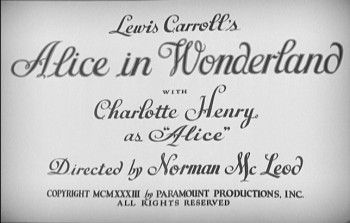 - The 1933 version of Alice In Wonderland, directed by Norman McLeod, is an interesting live action approach to an adaptation of Carroll’s classic. Something rarely discussed in animation circles is the Harman & Ising insert in the film, an animated version of the Walrus and the Carpenter. Tweedle Dee & Tweedle Dum narrate the poem, and there’s constant cutting back and forth of the live storytellers and the animated story.
- The 1933 version of Alice In Wonderland, directed by Norman McLeod, is an interesting live action approach to an adaptation of Carroll’s classic. Something rarely discussed in animation circles is the Harman & Ising insert in the film, an animated version of the Walrus and the Carpenter. Tweedle Dee & Tweedle Dum narrate the poem, and there’s constant cutting back and forth of the live storytellers and the animated story.
The animation is right out of the Warner Bros H-I style. Not very advanced, though it’s certainly serviceable (especially given some of the second-rate costumes in this film.) This was done, I would guess, right after Hugh Harman and Rudolph Ising had left WB, and were out on their own – just prior to doing the Cubby cartoons for Van Buren and certainly prior to MGM. Alice In Wonderland is a Paramount release.
Here are some frame grabs – mostly of the animation. I’ve given a couple of shots of the Tweedles to give you the idea.
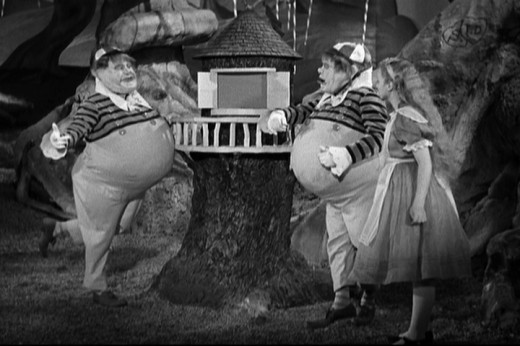 2
2(Click any image to enlarge.)
 3
3
The sun was shining on the sea, shining with all his might;
He did his very best to make the billows smooth and bright -
 5
5
And this was very odd, because it was the middle of the night.
 7
7
The Walrus and the Carpenter were walking close at hand;
They wept like anything to to see such quantities of sand.
 9
9
“O Oysters come and walk with us!” The walrus did beseech.
“A pleasant walk, a pleasant talk, along the briny beach.”
 11
11
“We cannot do with more than four, to give a hand to each.”
 13
13
The eldest Oyster looked at him, but never a word he said;
The eldest Oyster winked his eye, and shook his heavy head -
 15
15
Meaning to say he did not choose to leave the oyster-bed.
 17
17
But other Oysters hurried up, all eager for the treat.
Their coats were brushed, their faces washed,
Their shoes were clean and neat -
And this was odd because, you know, they hadn’t any feet.
 19
19
Four other Oysters followed them; and yet another four;
And thick and fast they came at last,
 21
21
And more, and more, and more -
All hopping through the frothy waves, and scrambling to the shore.
 23
23
“The time has come,” the Walrus said, “To talk of many things;
Of shoes – and ships – and sealing wax – of cabbages – and kings -
And why the seas is boiling hot – and whether pigs have wings.”
“A loaf of bread,” the Walrus said, is what we chiefly need;
Pepper and vinegar besides are very good, indeed.”
 25
25
Now if you’re ready, Oysters dear, we can begin to feed.”
“But not on us! the Oysters cried, turning a little blue.
After such kindness that would be a dismal thing to do.”
 31
31
“It seems a shame,” the Walrus said, “To play them such a trick.
 33
33
“After we’ve brought them out so far and made them trot so quick.”
 35
35
The Carpenter said nothing but, “The butter’s spread too thick!”
 37
37
“I weep for you,” the Walrus said. “I deeply sympathize.”
With sobs and tears e sorted out those of the largest siize.
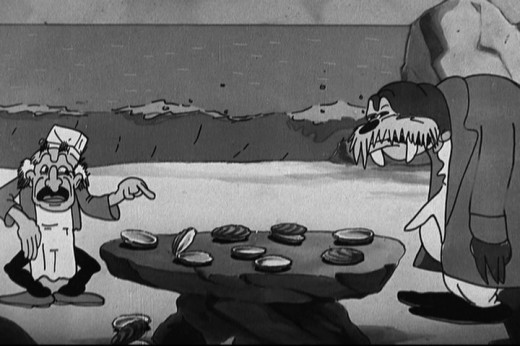 39
39
“O Oysters,” said the Carpenter, “You’ve had a pleasant run!
Shall we be trotting home again?”
 40
40
But answer there was none – And this was scarcely odd, because
They’d eaten every one.
Books &Illustration &Layout & Design &Mary Blair &Models 09 Aug 2010 06:35 am
Mary Blair – 5
- Alice. More pictures from the Japanese book, The Colors of Mary Blair. There are lots of pictures from this book that I’m not posting; I’d urge you all to buy it.
The three key feature films that were influenced by Mary Blair are Cinderella, Alice In Wonderland and Peter Pan. There’s a wealth of model drawings from each of these three available in various books. John Canemaker‘s brilliant work, The Art and Flair of Mary Blair, pulls all three together into one chapter and handles them beautifully.
Each of the films has a companion storybook that is illustrated with Mary Blair’s models. Peter Pan, Alice In Wonderland, Cinderella.
These Alice drawings are overexposed, but I picked a bunch I like.
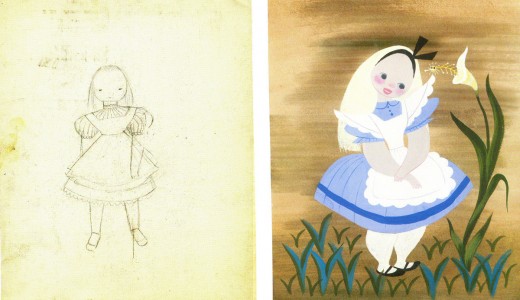
(Click any image to enlarge.)
Books &Commentary &Disney &Story & Storyboards 02 Aug 2010 10:08 pm
Joe and Joe
- Today is the day that John Canemaker‘s book, Two Guys Named Joe: Master Animation Storytellers Joe Grant and Joe Ranft officially hits the stores. I urge you to take a look and go for it. The book is great.
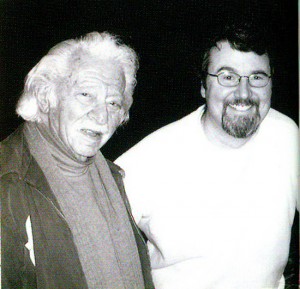 - It was about nine months ago that John Canemaker let me read the galleys of his new book, Two Guys Named Joe: Master Animation Storytellers Joe Grant and Joe Ranft. I’d been aware of the book for a couple of years now, and whenever I’d heard John talk about it I wondered how the two guys fit in together to make a book. When I was handed the galleys, I moved slowly ahead with some trepidition.
- It was about nine months ago that John Canemaker let me read the galleys of his new book, Two Guys Named Joe: Master Animation Storytellers Joe Grant and Joe Ranft. I’d been aware of the book for a couple of years now, and whenever I’d heard John talk about it I wondered how the two guys fit in together to make a book. When I was handed the galleys, I moved slowly ahead with some trepidition.
I basically knew who the two Joes were from my reading and my NY attempts to keep up with the Hollywood system. Joe Grant was an old timer who’d dominated the Disney modelling department (the only time there was a department exclusively for model sheets), and he’d come back to act as one of the wizened artists helping to shape the new “Renaissance” in the animation community. Joe Ranft was one of the key CalArts guys who’d gone through the Disney system on his way to Pixar where he helped to shape that studio. There’s no doubt he was key to Toy Story, A Bugs Life and Monsters Inc.
What connection would John Canemaker have for tying these two together? Would that connection be enough to fill a book?
Of course, all such conjecture was stupid on my part. The book, as it turned out, is one of John Canemaker‘s finest, and that’s saying a lot. John, after all, is one of the best of our animation historians. His material is well researched, his facts are accurate, and his information is always pertinent and absorbing. He is also a good writer. He tells a story and reveals his information as any good writer would. There’s a solid construction to all of his books, and he lets you into the book in a comfortably relaxed way so that you’re absorbing the story and facts all together, and you are pulled into the book. This is the greatness of Two Guys Named Joe.
As for the connection, John explains that well. Not only, of course, within the book, but he had this succinct statement to make in an interview with Amid Amidi: “I saw the possibility of an overview of the history of storytelling at Disney and Pixar through a very human story of two artists straddling the 20th and 21st centuries.” And that’s exactly what John uses the book to do. He wants to really upchuck the earth of the story departments of both Pixar and Disney, and he does a good job of it.
I’ve now read the book twice. Once in galley form, once in final book form. The book is a rich-looking item full of the finest artwork from storyboards, printed material and developmental art. It’s a gorgeous book.
However, the real gold is in some of the writing and treasured bits that John has dug up to support his material. Here, for example is a small piece about Alice In Wonderland’s story development:
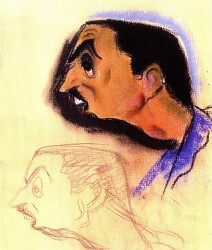 A March 15, 1939, story conference transcript reveals Walt’s frustration with the project:
A March 15, 1939, story conference transcript reveals Walt’s frustration with the project:WALT: (To Joe) Have you been through A//ce in Wonderland lately?
JOE: No. I’ve been through the script though. I think there are some pretty good situations in this.
WALT: Yes, and some, too, that are not so good.
JOE: I like the stuff on the disappearing cat—swell possibilities in that.
WALT: Yes. Let’s see. What are the good situations?
JOE: The tea party stuff is good.
WALT: Yes, the tea party is to me the best. . . You
know, I think we’re missing a hell of a lot in the stuff that is our medium. . . everything isn’t dialogue. Talk, dialogue business that depends on dialogue, hinges on dialogue.
Disney then tore into an unfortunate writer named Dana Coty.
WALT: I’m saying that to you because I think maybe
you’re the one that’s responsible for a lot of silly business that has no basis on anything funny.
DANA: Well, in the duchess’s house, I wrote that very loosely to begin with, Walt.
WALT: I don’t give a damn how you wrote it. It’s what we’re driving at. If it hasn’t got a basis for something funny, don’t write it! There’s no use writing the thing and then alibi-ing for it afterwards. It just throws us off the, track. Don’t just write anything to fill up some pages. We had the same criticism, the last time we were together.
John uses this anecdote to not only say something about Disney, himself, but the way he communicated with Grant and the hostility he might display for others. He did not mince words or waste time where he thought it was wasted. They were trying to solve the problms they saw in Alice In Wonderland, but we learn that Grant, Huemer and others felt that Disney was the problem. They felt he didn’t quite understand the Victorian humor of the original and tried to gag it all up. It’s just one wonderful excerpt dug deep in the book.
Another gem of a sequence involves Joe Ranft. It’s the point just when the Pixar artists are trying to sell Toy Story to the Execs at Disney. They’re doing everything in their power to make the film story good while placating the Disney people, and they’re having a hard time of it.
- Disney insisted the production move to Los Angeles so the studio could oversee things. “And give us more notes,” Ranft lamented.
Lasseter, whose “heart was broken,” begged for a two-week reprieve to turn things around. After obtaining Disney’s skeptical permission, Lasseter, Ranft, Docter, and Stanton resolved to “make the movie we want to make!”
. . .
The process included writing, gathering more material, constant meetings, weeding out, refocusing, and . . . more meetings. “Two or five heads are better than one,” Ranft believed. “If you can work together without killing each other, you an accomplish a lot.”
Going forward, Pixar gladly accepted notes from Disney and welcomed participating in brainstorming sessions with their artists. “But,” Ranft said, “we’d go away and really think about [the notes]. A lot of times we’d go, ‘No. Here’s the real problem!’ And it was even deeper than the notes. ‘And here’s how we’re going to fix it.’”
Regarding the creative process, Ranft once said, “It’s a challenge. The final product is the goal you’re searching for. [Your little sequence is] gonna get smashed, trashed. It’s gonna come apart for the good of the final film . . . it’s a paradox. You’ve got to put yourself into it, and then you’ve got to take yourself out of it. Be objective and not be hurt.”
And that’s the point of the two guys. They understood the value of the story and the center of the films they worked on and over. Nothing mattered, including personal insult, as long as the story came out right. They were film artists and knew how to get what they needed to complete their goals.
My personal preference is to want to know more about the old timer and to learn more about the golden age. However, it’s totally my bias, and the proof of this book’s success is that I was completely absorbed by all that was written about both men.
This is more than a good book. Anyone in love with animation should own a copy and read it carefully. There’s a lot there, and it’s all good. It’s stunningly designed with beautiful animation art treasures well displayed.
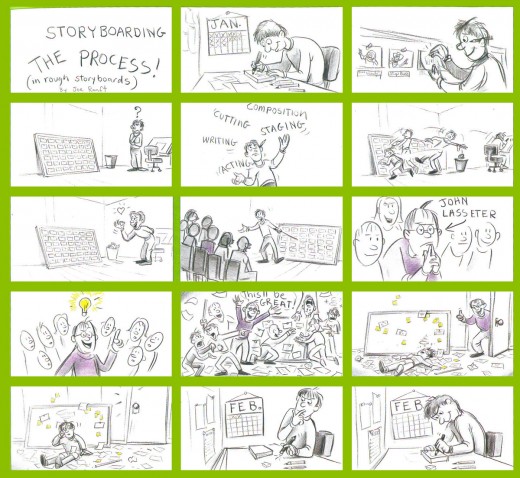
A telling board by Ranft.
________________
Amid Amidi offers an excellent interview with John Canemaker on the subjects of the book at his Cartoon Brew site. I recommend you all read it.
There’s also a video promo you can catch on YouTube if you’re more visually oriented.
Books &Disney &Illustration &Layout & Design &Mary Blair &Models 02 Aug 2010 07:22 am
Mary Blair – 4.
This continues my series of color stills from some of the beautiful work in the exquisite Japanese book on Mary Blair, The Colors of Mary Blair. If you have the resources to buy this book, you should.
- The big three for Mary Blair, as a designer of Disney animation, were Cinderella, Alice in Wonderland and Peter Pan. We’ll spend all of this post on Cinderella. Many of these illustrations made it into John Canemaker‘s invaluable book, The Art and Flair of Mary Blair. Others have made it into a Cinderella storybook with text by Cynthia Ryant. Still others appear only in this Japanese edition.
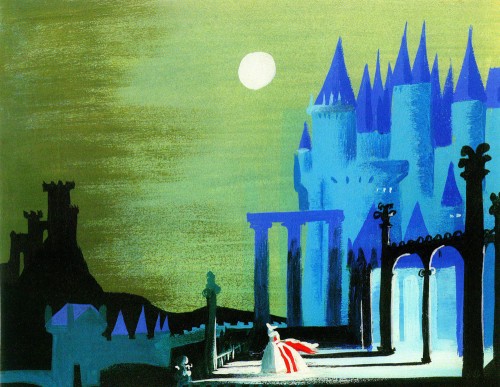 1
1
Animation &Animation Artifacts &Commentary &Independent Animation &Puppet Animation 22 May 2010 09:05 am
Bits
- I recently received this comment from Amy Bunin, the daughter of Lou Bunin, and was afraid it might have been missed. So I’m posting it here.
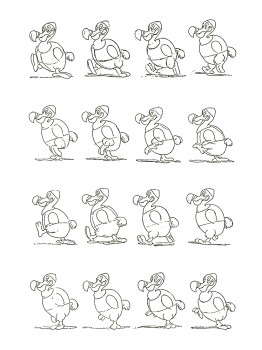 Just a note to say that my sisters and I have put our family collection of Lou Bunin’s puppets and artwork from Alice in Wonderland up for auction at Profiles in History.
Just a note to say that my sisters and I have put our family collection of Lou Bunin’s puppets and artwork from Alice in Wonderland up for auction at Profiles in History.
Lou’s stuff is on “Day 2″ of the auction. The sketches by Art Babbitt of the Dodo walking that are featured in Shamus Culhane’s Animation book (see above) –along with 10 or so other characters– are included: Lot 634. Wish us luck!
I have also started a blog on my father’s life and work – www.loubunin.com
Amy Bunin
This is an excellent blog with lots of information and stories about Lou Bunin and his work. I encourage you to go take a look.
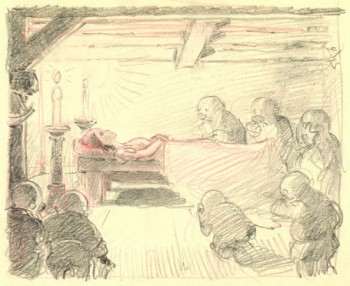 - John Canemaker ‘s most recent blog entry for Print Magazine is now posted and can be found here.
- John Canemaker ‘s most recent blog entry for Print Magazine is now posted and can be found here.
John writes a clear and full comparative study between the work of Albert Hurter, one of the principal designers of Snow White, and some of Giotto’s Renaissance painting.
He shows how Hurter may have been influenced. It’s a good read for any enthusiasts of Snow White, Hurter or Giotto.
Frank and Caroline Mouris have been making innovative, Independent animation forever. Their initial film, Frank’s Film, swept the world quickly and won the Oscar making a Frank a household name among animators in the 1970′s.
ASIFA-East is presenting an evening of their films on Tuesday, June 15. It’s sure to be an entertaining and enlightening event. Keep the date open to join the couple as they present their films.
Articles on Animation &Puppet Animation 09 May 2010 08:10 am
Close Up Magazine
David Prestone published a magazine in the late 70′s called Closeup Magazine. This was a professionally produced magazine that featured articles on stop motion puppet animation and special effects. Sadly the magazine stopped production after the third issue.
I’d posted a number of pieces from the second issue of the magazine, which featured interviews from many of the animators who worked on the 50′s puppet film, Hansel and Gretel. see here and here.
David now tells me that he has a number of collector’s issues still in great condition and would like to sell them. To that end, I’m posting all the information he’s sent me about all three issues, and I strongly encourage you to buy them. They’re truly gems from the past about an often neglected subject – stop-motion animation.
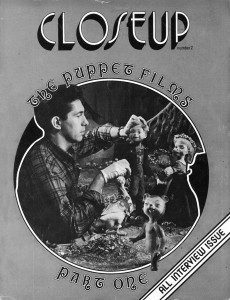 CLOSEUP ONE: Our premier issue, leads off with an exhaustive thirty five page filmbook treatment of “The Golden Voyage of Sinbad” including detailed examinations of the special effects, musical score,origins of the mythological creatures used, etc. A five page article on the making of “Flesh Gordon” follows (with complete plot synopsis), and a discussion of the first seventeen episodes of the “Land of the Lost” television series rounds out the magazine. In extremely short supply.
CLOSEUP ONE: Our premier issue, leads off with an exhaustive thirty five page filmbook treatment of “The Golden Voyage of Sinbad” including detailed examinations of the special effects, musical score,origins of the mythological creatures used, etc. A five page article on the making of “Flesh Gordon” follows (with complete plot synopsis), and a discussion of the first seventeen episodes of the “Land of the Lost” television series rounds out the magazine. In extremely short supply.
CLOSEUP TWO: All interview issue. Six stop-motion animators discuss the making of such filmlas “The Time Machine,” “The
Wonderful World of the Brothers Grimm,” “Dinosaurus,” “Tom Thumb,” “Alice in Wonderland” and many seldom seen animated
television commercials. Over 100 rare, behind-the-scenes photographs. Plus: Kathryn Grant, Kerwin Mathews, and scenes from Ray Harryhausen’s latest film, “Sinbad and the Eye of the Tiger.”
Here’s a flyer that David did for issue #3:
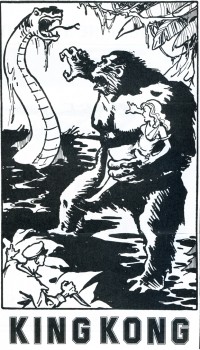 THE KING KONG LETTERS — The genesis of “The Making of King Kong” by Orville Goldner and George Turner-traced through quotes from correspondence with author Turner. Including interviews and comments from: Marcel Delgado, Ernest Schoedsack and Ruth Rose, Orville Goldner, Merian C. Cooper and other members of the cast and crew of this film classic. Illustrated with rare advertisements and campaign material from the super-scarce Kong 1933 and ’38 pressbooks.
THE KING KONG LETTERS — The genesis of “The Making of King Kong” by Orville Goldner and George Turner-traced through quotes from correspondence with author Turner. Including interviews and comments from: Marcel Delgado, Ernest Schoedsack and Ruth Rose, Orville Goldner, Merian C. Cooper and other members of the cast and crew of this film classic. Illustrated with rare advertisements and campaign material from the super-scarce Kong 1933 and ’38 pressbooks.
KING KONG UNCENSORED – A look at Kong’s darker side . . . Kong the killer, storming through the native village indiscriminantly killing and maiming to regain his bride. Kong in Manhattan, chewing New Yorkers, dropping women out of windows, creating havoc and wanton destruction. All of the effects scenes that were shot and later deleted (and censored) from the film, fully described, with quotes from the original Kong shooting script and hard cover novelization. Illustrated with two never before published pre-production sketches by artist Mario Larrinaga, and some of the best fan art around.
KING KONG UNCHAINED – A retrospective look at the “Fight Heard ‘Round the World” . . . Kong’s stupendous battle in the grotto with the King of Dinosaurs: Tyrannosaurus Rex!
THE KING KONG YOU’LL NEVER SEE – The full story behind “The Legend of King Kong”: Universal Pictures’ stillborn Kong remake, which would have utilized the talents of stop-motion animator, JIM DANFORTH.
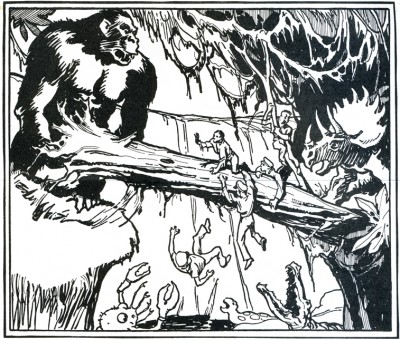
All King Kong artworkis by Glen Cravath
and was done in 1933 fpr inclusion in
the King Kong/RKO pressbook.
KING KONG DETHRONED – A talk with Rick Baker, Paramount Pictures’ Monkey Man. Things were not all mangoes and bananas for Rick on the set of the latest Dino de Laurentiis production. In an exclusive interview, this talented young man discusses his current feud 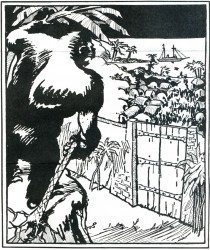 with the makers of the new King Kong film. Illustrated with exclusive behind-the-scenes photographs from the movie!
with the makers of the new King Kong film. Illustrated with exclusive behind-the-scenes photographs from the movie!
THE KING KONG CRITICS ROUNDTABLE – Several top animation fans’ opinions of the Paramount Pictures remake.
KING KONG IN PRINT and KING KONG ON ACETATE -Our regular review section, spotlighting this issue, books and records of recent vintage pertaining to the amazing anthropoid.
Features on Ray Harryhausen’s latest Dynarama effort SINBAD AND THE EYE OF THE TIGER, and the puppet filma of Rankin/Bass Productions.
CLOSEUP THREE: *Professionally printed and designed. *More pages, photos, and features than ever before. *A perfect addition to any special effects fan’s collection. *Printed on sturdy 80 Ib. gloss-coated paper in a strictly limited edition.
ALSO AVAILABLE: The Editors of CLOSEUP have obtained a limited amount of copies of a reprint booklet of a “new” King Kong novelization. This slim pamphlet, a reproduction of the English Boy’s Magazine for October 28th, 1933 has 8 fine illustrations, “How They Made King Kong,” and a full page advertisement for a Kong sequel “The Menace of the Monsters” (in which the prehistoric denizens of Skull Island are transported to England where they break loose and wreak havoc on an unsuspecting populace). Imported from England. Supply is extremely limited.
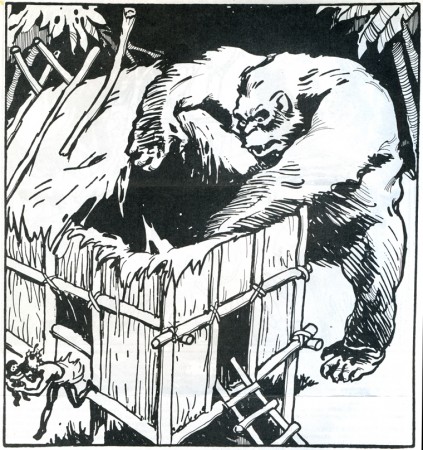
.
DAVID PRESTONE
46 -16 MARATHON PARKWAY
LITTLE NECK, NEW YORK 11362
(Checks and money orders must be made out to: DAVID PRESTONE.)
All orders have to be done through the mail.
These are all the original issues of the magazine – not reprints.
issue #1 – $50 postpaid
issue #2 – $25 postpaid
issue #3 – $25 postpaid
Commentary &T.Hachtman 28 Nov 2009 08:51 am
Fox/List/Gert
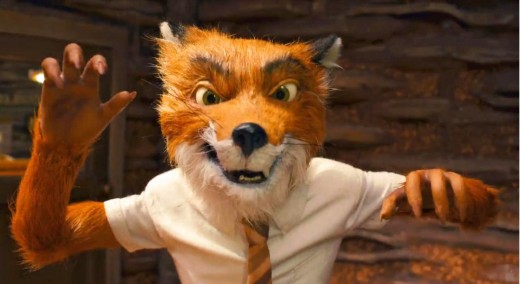
The Fantastic Mr. Fox – Did I tell you often enough that I really like this movie? One director – one voice. Independent spirit. Relatively low budget – $40 million. See it for fun.
- There’s a solid interview with Wes Anderson on the always enjoyable Onion’s AV CLub. His comments are worth reading, expecially if you’ve seen the film.
- Rotten Tomatoes, on the arrival of Disney’s The Princess and the Frog, has created a listing of Disney animated features and organized them into a list of titles. The order of the list is determined by some shaky criteria. Per Rotten Tomatoes: We used a weighted formula that takes into account the Tomatometer, number of reviews, and release year of every film included. We excluded all Disney subsidiaries and companies through which Disney has distribution deals hence, no films from Pixar, Studio Ghibli, or DisneyToon Studios are on the list.
Here’s their listing. Each title is followed by the Tomatometer rating:
- 1. Pinocchio 100%
2. Snow White 98%
3. Fantasia (1940) 98%
4. 101 Dalmatians 97%
5. Dumbo 97%
6. Beauty & the Beast 93%
7. Lion King 92%
8. Aladdin 92%
9. Cinderella 92%
10. Sleeping Beauty 91%
11. The Little Mermaid 90%
12. Bambi 89%
13. The Jungle Book 89%
14. Bolt 88%
15. Tarzan 88%
16. Lady and the Tramp 87%
17. Mulan 86%
18. Emperor’s New Groove 85%
19. Lilo and Stitch 85%
20. The Rescuers 84%
21. Fantasia 2000 82%
22. Hercules 83%
23. Peter Pan 83%
24. Alice In Wonderland 81%
25. The Hunchback of Notre Dame 72%
26. The Sword in the Stone 73%
27. Treasure Planet 70%
28. Meet the Robinsons 66%
29. Dinosaur 65%
30. The Aristocats 65%
31. The 3 Caballeros 87%
32. The Fox and the Hound 71%
33. Pocahontas 56%
34. Home on the Range 55%
35. Robin Hood. 55%
36. The Black Cauldron 58%
37. Atlantis: the Lost Continent 46%
38. Oliver and Company 44%
39. The Adventures of Ichabod & Mr. Toad 89%
40. The Rescuers Down Under 60%
41. The Many Adventures of Winnie the Pooh 91%
42. The Great Mouse Detective 79%
43. Brother Bear 38%
44. Chciken Little 36%
45. Saludos Amigos 70%
46. Melody Time 88%
47. Make Mine Music 67%
48. Fun and Fancy Free 67%
Just to amuse myself, I sought out all the Don Bluth films and compared their Tomatometer ratings to see which would be hightest. No surprises, except maybe that American Tale was rated so low. These aren’t graded the same way the Disney films were, above. Some of Bluth’s films weren’t rated:
- The Secret of NIMH 94%
Anastasia 85%
An American Tale 63%
Titan AE 51%
All Dogs Go to Heaven 44%
The Pebble and the Penguin 36%
Thumbelina 25%
Rock-A-Doodle 20%
Continuing the process let’s look at Ralph Bakshi‘s films. He didn’t fare as well as Bluth; some of Bakshi’s films weren’t reviewed either:
- Heavy Traffic 88%
American Pop 56%
Fritz the Cat 53%
Wizards 53%
The Lord of the Rings 47%
Cool World 6%
- After posting Tom Hachtman’s Renaissance Masters the past four weeks, I’m sort of out of sorts to not have any more of it. Let me post a couple of Gertrude & Alice cartoons to fill the void:
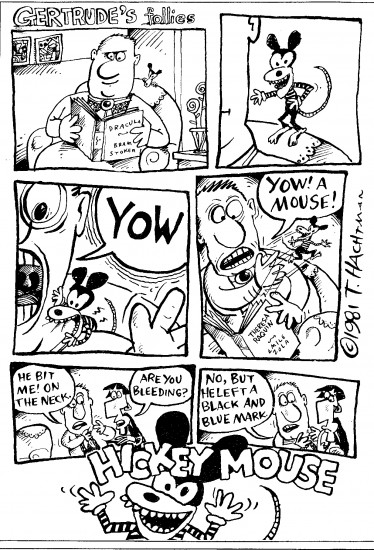
This one could be a comment on the “Twilight” experience.
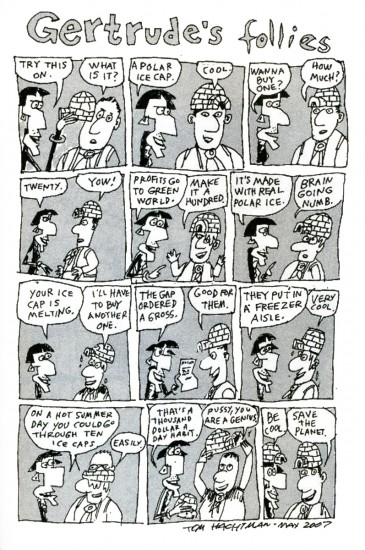
This week I heard about the after-show auction going on
at A Steady Rain‘s Broadway performances. Hugh Jackman &
Daniel Craig are raising cash for Broadway Cares by having
after-show auctions of their “sweaty” T-shirts.
Gert & Alice can do it for the environment.
And while I’m at it, let me post one of my favorite strips (which I’d posted once before.)
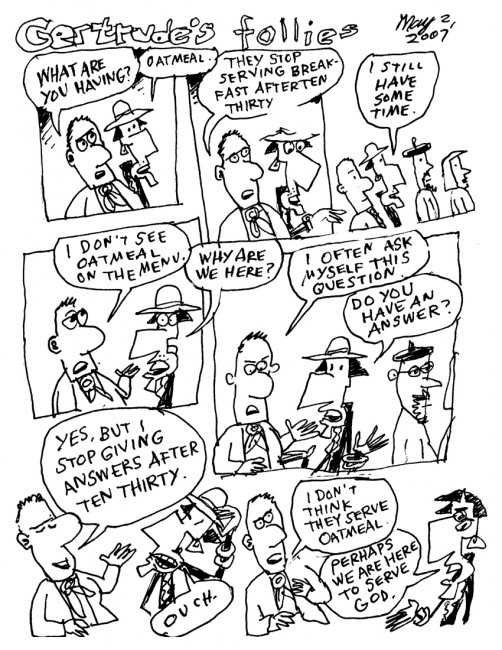
(Click any image to enlarge.)
